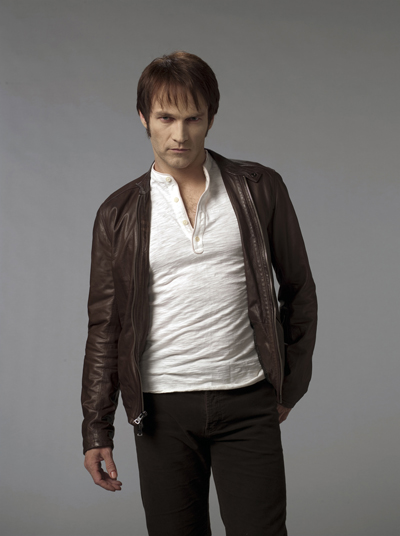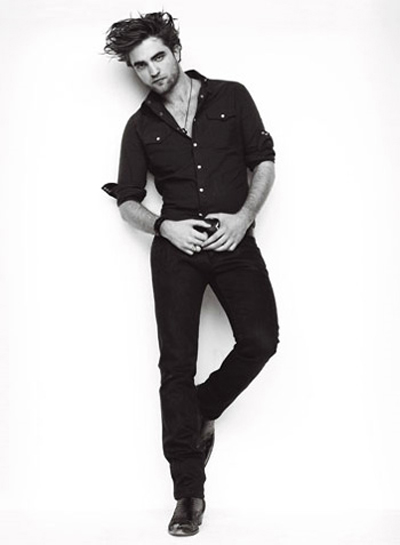 |  |  |
 |  |  |
Both the scene stills and sexualized images portray the vampire characters as very solemn and serious. This can be concluded based off of facial expressions and furrowed brows. The question that comes to mind as a result of these faces is, if these images are representations or symbols of death, why are they so attractive to viewers? The scene stills have the ability to disguise death as an attractive male pursuer whose focused eyes create a look of determination as if to say "I always get what I want". Overall, the appearance of these men must have a certain comforting appeal, based off their large muscles and powerful stares. Although they are the cause of death, in some ways their physique depicts them as protectors from death as well. All three sexualized images show these vampires as very clean-cut with white backgrounds. This white background further adds to the sense of comfort created in these images, because of the fact that these vampires look no different than regular models posing for pictures. All in all, an analysis of both sexualized images and scene stills of the vampires reveals them to be nothing more than stern, muscular men.
The most important component of the vampire phenomenon is, of course, the vampires themselves. These vampires are what represent the fears of society as a whole. Fear of death is something relatable to all of American society, because death is something inevitable and unavoidable to all human beings on this earth. Some fears are more extreme than others, but the idea of death is something that is ever-present in society, since people die on a daily basis. With increased media news surrounding events such as September 11, 2001, Hurricane Katrina, and the massacre at Virginia Tech, just to name a few, it seems clear that death is something becoming a much more popular subject in society. In a study by Joy J. Burnham, the author examined fears of children and adolescents in Grades 2-12 in a pre and post-September 11, 2001, comparison using the American Fear Survey Schedule for Children. Burnham found that "by comparing pre-9/11 and post 9/11 years, the results indicated that post-9/11 participants were significantly more fearful of "our country being invaded by enemies," "terrorist attacks," and "flying in a plane" than were pre-9/11 participants" (Burnham). Burnham concluded that "the examples given in the current study offer a glimpse of the fears and anxieties that were manifested for children and adolescents after 9/11, even in communities far away from the disaster sites" (Burnham). Although this study focused on children, the fear of death that lingers from numerous tragedies has influenced all people far beyond the places where these events transpired. This includes children who know nothing beyond what their parents and the media portray to them.
Although fear of death has a direct relation with post 9/11 culture, fear of the "other" is a theme that has become most prevalent since 9/11, because of the contact America now has with other foreign people and places. As of 2006, "fears of international terrorism have decreased" yet "remain high with almost 75% of Americans still considering terrorism a critical threat to their country" (Larsen). Larsen's study of North American fears showed that "popular attitudes about indigenous peoples, immigrants, refugees and those who 'look' Muslim also constitute the North American discourse of fear and insecurity" (Larsen). "In the US, following the 9/11 attacks, 762 'illegal' immigrants were jailed as part of the general sweep of potential suspects who might carry out another attack. On the basis of the idea of potential risk and their lack of legal status, authorities deported most of these individuals without charging them with any offence" (Larsen). Larsen goes on to say that "it is worth pointing out that in times of economic insecurity, fear of the 'Other' intensifies with attacks against those perceived to have taken 'our' jobs, and against countries where American and Canadian companies have outsourced work to cheap labourers" (Larsen). By getting to know the "other" on a much more personal level, as is done through these three examples, fear of the "other" becomes less of a fear and more of an understanding of the "other".
Fears seemed to be soothed based off of the images of these vampires in an extremely contradictory way. Although these vampires are symbols of death themselves, they also create a sense of comfort. By getting to know these vampires on a more personal level through watching the content of these shows, ones fears start to dissolve. Though fear of death and fear of the "other" are common fears in American society, it is these fears which are used to create the vampire phenomenon.
 |  |  |